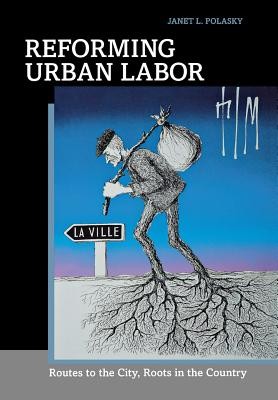
- We will send in 10–14 business days.
- Author: Janet L Polasky
- Publisher: Cornell University Press
- ISBN-10: 0801447941
- ISBN-13: 9780801447945
- Format: 16 x 23.6 x 2 cm, hardcover
- Language: English
- SAVE -10% with code: EXTRA
Reviews
Description
Reforming Urban Labor is a history of the nineteenth-century social reforms designed by middle-class progressives to domesticate the labor force. Industrial production required a concentrated labor force, but the swelling masses of workers in the capitals of Britain and Belgium, the industrial powerhouses of Europe, threatened urban order. At night, after factories had closed, workers and their families sheltered in the shadowy alleyways of Brussels and London. Reformers worked to alleviate the danger, dispersing the laborers and their families throughout the suburbs and the countryside. National governments subsidized rural housing construction and regulated workmen's trains to transport laborers nightly away from their urban work sites and to bring them back again in the mornings; municipalities built housing in the suburbs. On both sides of the Channel, respectable working families were removed from the rookeries and isolated from the marginally employed, planted out beyond the cities where they could live like, but not with, the middle classes.In Janet L. Polasky's urban history, comparisons of the two capitals are interwoven in the context of industrial Europe as a whole. Reforming Urban Labor sets urban planning against the backdrop of idealized rural images, links transportation and housing reform, investigates the relationship of middle-class reformers with industrial workers and their families, and explores the cooperation as well as the competition between government and the private sector in the struggle to control the built environment and its labor force.
EXTRA 10 % discount with code: EXTRA
The promotion ends in 20d.16:44:24
The discount code is valid when purchasing from 10 €. Discounts do not stack.
- Author: Janet L Polasky
- Publisher: Cornell University Press
- ISBN-10: 0801447941
- ISBN-13: 9780801447945
- Format: 16 x 23.6 x 2 cm, hardcover
- Language: English English
Reforming Urban Labor is a history of the nineteenth-century social reforms designed by middle-class progressives to domesticate the labor force. Industrial production required a concentrated labor force, but the swelling masses of workers in the capitals of Britain and Belgium, the industrial powerhouses of Europe, threatened urban order. At night, after factories had closed, workers and their families sheltered in the shadowy alleyways of Brussels and London. Reformers worked to alleviate the danger, dispersing the laborers and their families throughout the suburbs and the countryside. National governments subsidized rural housing construction and regulated workmen's trains to transport laborers nightly away from their urban work sites and to bring them back again in the mornings; municipalities built housing in the suburbs. On both sides of the Channel, respectable working families were removed from the rookeries and isolated from the marginally employed, planted out beyond the cities where they could live like, but not with, the middle classes.In Janet L. Polasky's urban history, comparisons of the two capitals are interwoven in the context of industrial Europe as a whole. Reforming Urban Labor sets urban planning against the backdrop of idealized rural images, links transportation and housing reform, investigates the relationship of middle-class reformers with industrial workers and their families, and explores the cooperation as well as the competition between government and the private sector in the struggle to control the built environment and its labor force.


Reviews